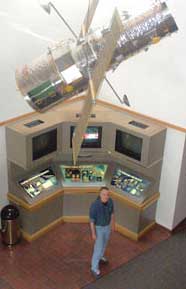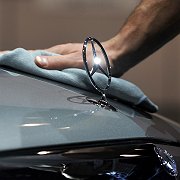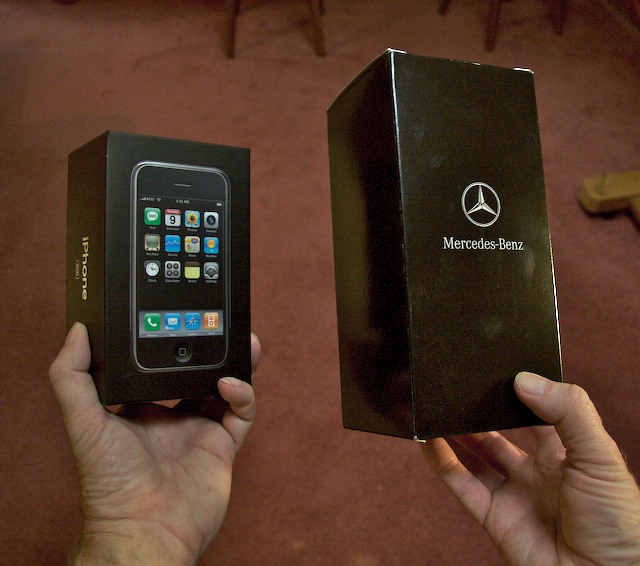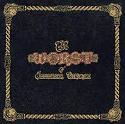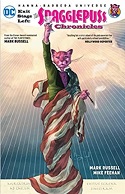[Geek Alert…]
My life with computers started with a Coleco Adam, and was not auspicious. It was 1983, back when consumer home computers had just started to appear on the store shelves, not just the back page advertisements of the hobbyist magazines. Apple, Atari, Commodore, Texas Instruments, Radio Shack and Heathkit all had one you could buy, most still horribly expensive. They had only text based user interfaces, and if they had graphics capabilities at all, they were very crude and slow.
Initially I saw little use for them, but I had a ColecoVision game console I played constantly and one day Coleco announced it was coming out with a home computer that would do it all, and play the same ColecoVision cartridges. A Commodore C64 could be had for around the same price, but I already had a big investment in ColecoVision game cartridges. Plus, the Adam came bundled with its own printer: a really nice (in theory) daisy wheel printer which would make good letter quality output, as opposed to most of the consumer dot matrix printers of the day. My typewriter skills were tragic. Worse, though I had a huge vocabulary for my age (due to being such a bookworm), I reliably failed to correctly spell a lot of it. When I saw a word processor demo…I think it was on an Atari…and discovered I could compose words on a computer screen…backspace, erase, correct, rearrange all of it before printing out a single page of paper…I was floored. Then I saw it spell check. That did it. I had to have one.
But like thousands of others I had to return my Adam the day after I bought it because it was defective. Not a good beginning to my entry into the world of computers. But because of all the hype from Coleco about what the Adam could do, I turned around and with the refund bought a Commodore C64. And my love of computers took wing almost immediately. In retrospect, it was probably a given that I’d get my hands on a computer eventually. I was always a little techno nerd, and had built my first Heathkit radio when I was a fifth grader (my teacher at the time refused to believe I’d built that radio myself when I brought it to show and tell and insisted I’d had help, which made me furious…). Computers and I were going to get a thing going eventually. We just were.
So now I had my first…well…second one. There was a kit you could buy for the Commodore that let you decode teletype traffic. It included a software cartridge and a box that converted the signals from the radio to something that could be fed into the Commodore’s serial port. I’d been hooked on shortwave radio since I discovered at eight or nine that I could listen to broadcasts from around the world on mom’s old one. So that kit was high on my list of things I wanted to try out. As soon as I got the Commodore home I ordered up one and when it came I connected it the really nice ICOM shortwave receiver I’d bought a few years previously with some inheritance money. Finally I could listen in on some of those mysterious beeping-clicking-chirping sounds I kept hearing on certain frequencies.
As I look back, this was oddly enough the real beginning for me. From my studies of radio I was already familiar with the concept of bandwidth…a thing the expensive ICOM receiver was able to adjust to better capture a signal. But with the RTTY converter kit I started becoming familiar with the basic concepts of electronic communication systems…how to work the serial port…bits, words, baud rate, and eventually also packets and protocols, concepts that would later be useful in understanding computer networking.
But the Commodore had one other thing that intrigued me. When you started it up without a software cartridge in it, the initial screen you got was its Basic interpreter. I began playing with that and right away the discovery that I could make the computer do stuff by feeding it instructions in Basic became an absorbing curiosity.
I could make it display words and shapes and colors on the screen…move them around and…ohmygosh, calculate the answers to complex math problems! Sweet! Algebra was my downfall in grade school, so this last really got my attention. With one of these things I could solve problems I simply could not cope with. Or so I thought. How I wish back then that someone had told me that algebra was just another kind of symbolic logic, because I actually did have a head for solving logic problems. I was doing it right there on the Commodore, every time I wrote a simple Basic program, although I didn’t realize it then.
I still needed a word processor. I checked around and found a program called PaperClip that ran on the Commodore. It did it all on that little machine. But it required one of the Commodore disk drives to run it. Which made sense. Even if they’d sold it on a cartridge, which a lot of software for the Commodore came on in those days, you still needed a place to store your written text while you were working on it. So I got the money together somehow and bought one. I quickly discovered I could store my Basic programs on that drive too. Good. Now I didn’t have to key my programs in every time I wanted to run them. Now I could write big ones, that did more things. This was when I really started learning how to compose software code, and test and debug it.
As time went on I began to bump into the limits of my Commodore’s horsepower. IBM came out with its PC and some friends of mine had one in their household. The thing awed me whenever I came to visit. Then I learned that some enterprising folks were selling parts you could put together to make one of your own. I’d been building Heathkit electronic gizmos for years, so the notion I could build my own IBM-PC from parts immediately took wing in me and I ran with it. When the next county HAM Fest came along I went with a list of parts and came home with the makings of the computer that would change my life.
And I knew after I had it together and working that something big had happened. I can still remember vividly sitting on the edge of my bed, just staring at it, amazed. It had a 16 bit microprocessor. It had 1 megabyte of ram, 648k available for user program space. I’d installed two double sided 5 1/4 inch Teac floppy drives, the best most reliable drives made, that could each hold a whopping 360k of data. I’d bought a Hercules Graphics card, one of the most powerful and sharpest monochrome cards made. And I’d installed a 2 megabyte expanded memory card, from which I could create a 2 megabyte ram disk. This was serious business. And so it was. That computer, and what I learned to do with it, eventually got me my first job as a programmer. Which led me, eventually to my first apartment of my own, then to a new car, and then to my first house, and to working on the Hubble Space Telescope. Wish I’d held onto it now, but you only see these things clearly in retrospect.
Had IBM not started to immediately lock down the PC platform I’d have been more grateful to them. But my love turned mostly toward Microsoft. They’d developed the operating system the PC ran on. But more importantly to me and my new career, they’d developed and extended the Microsoft dialect of the Basic programming language I’d begun to earn a really nice living with. And their professional developer’s tools were easily affordable, compared to the stuff the big computer companies sold. Even after IBM entered the microcomputer market they still didn’t get what it was about. One story I heard was that while IBM was hawking it’s new OS/2 operating system at tech conferences, they’d sell you the driver development kit for about ten grand if you asked. That was pretty typical pricing for software from the big iron crowd. Microsoft on the other hand, working its competing NT operating system, would sell you their driver development kit for fifty bucks…but if you gave them a nice song and dance at the conference about the really cool thing you were working on, they’d just give it to you for free.
That was then. In those days I viewed Microsoft with something like revolutionary ardor. They had taken on the big establishment corporate behemoth IBM and won. They had brought the power of the computer out of the big corporate data centers and into the hands of the people. They had made tools available to everyone, at prices most of us could afford, to create software that ran rings around anything the big iron mainframes could do, other then by raw horsepower. I can still remember demonstrating my DOS Basic IDE to several Baltimore Gas and Electric mainframe programmers, how their jaws simply dropped when I showed them that I could run and debug my program right there in the editor, and how the editor would even check my syntax for me as I typed. This was back in 1993 and these were simple DOS programs, but they danced rings around what anyone was doing on the mainframe.
Microsoft practically gave me my career as a software developer, and all the perks that came with it: a good income, a place of my own to live in, and a new car. Just a few years before I’d been living in a room in a friend’s basement, mowing lawns and doing Manpower jobs to make ends meet. I’d had to scrounge up a junker car from a friend to travel to Baltimore for my first job as a programmer. Now I had a new car, and my first apartment that was all my own, and enough money at the end of the week to think of buying things like…well…like a better computer. I soon graduated from that first IBM PC compatible I’d built to other more powerful ones. But I always kept building my own. That way, I could get exactly the hardware I wanted in it.
Which was so unlike the other kid on the block back then…Apple. Apple computers were there right from the beginning of the personal computer revolution. The Apple II was the first consumer PC that came complete in the case with a keyboard. It was the Visicalc spreadsheet, mated to that early Apple II computer, that brought the PC into the workplace, and made IBM finally take notice of the market for those little "toy" computers. But the Apple was hugely expensive and even then, was its own world. Especially after struggling with all the non-standard ports and software quirks of the Commodore (even it’s character set wasn’t standard ACSII…) I wanted nothing more to do with closed systems. At the time I thought Microsoft didn’t either. At the time I thought Microsoft was all about the freedom the personal computer brought down from the corporate heights to everyone. Go ahead…laugh at me. I can laugh too. Now.
Time passes…the universe expands… I got the job of my dreams at Space Telescope, largely for the skills I’d developed writing business applications in Microsoft Visual Basic. But by then I’d become massively disillusioned by Microsoft’s highly predatory nature. Bill it turned out, wasn’t a revolutionary after all. He was just another robber baron, willing to betray every ideal of the personal computer revolution for power and money. Software was just a means to an end. He’d realized that the future world would be driven by software, and he wanted to be the John D. Rockefeller of software. By comparison, Steve Job’s little Cult of Macintosh didn’t seem so egregious, although I still didn’t want any part of it.
I gravitated to Linux and the Open Source movement. At work, most of the systems were Unix based, so learning to run and maintain Linux at home helped me greatly with my working skill set. I eventually took on the task of maintaining the Linux test center for our engineering branch. I tested and ran various Linux distributions at home too, in the hope that I could wean myself off of Microsoft systems. By that time, two things had permanently soured my relationship to Microsoft. First, they’d trashed their Basic development platform, replacing it with a pathetic .NET bastardization. Second, they’d implemented software branding in the OS, which made it nearly impossible for me to experiment with building new hardware at Casa del Garrett. But as time went on, and my responsibilities at work grew, I needed more and more to have computers around me that didn’t have to spend a lot of time fixing and tweaking and fiddling with and Linux is a lot of things but not that. And in my personal private world the story was much the same.
The computer had entered parts of my life I’d never dreamed of. My photography hobby was now thoroughly tied to the computer, as were the cartoons I was now putting up on my web site. I was starting to get really, really tired of how often my Microsoft workstation at home, or the Linux ones, were blowing up on me because some software update had broken everything right as I was trying to get some work done. And now the hardware for them seemed to also be going down in quality. I was always having to rebuild a machine because some part of it had failed. My closet was full of computer parts now, that I was relying on more and more to be able to swap around until I got something fixed.
At work, the Macintosh was gaining more and more ground, largely because the Mac OS then was based on a Unix kernel. In 2004 I bought my first one, a 12" PowerBook G4 laptop, to take with me on a trip to a software developer’s conference. I bought it mostly to explore the Mac OS for the first time, and to familiarize myself with it enough that I could be useful to the Mac users at work, and to the Mac users in our external user community.
Macs had by then evolved greatly since that first Macintosh came out in 1984. The operating system as I said, was now based on a Unix kernel and was now truly preemptively multi-tasking and powerful. There was an actual terminal window in the Mac now…a thing that had once been considered heresy…so now a developer or a power user could get inside of the file system and the OS and dig around a bit. This was something that previous Macs had been determined to keep you out of. And Macs lived in much better harmony with third party hardware now. They even worked with two-button mice! And though the Mac was still a highly closed ecology, let it be said that Microsoft, by way of stabbing so many of its software and hardware partners in the back, was working mightily it seemed to shrink its own ecology. How many viable commercial non-Microsoft word processors are still in production for Windows? How many alternative compilers and software development platforms? At least Apple’s ecology worked.
And that was the thing. That little Mac laptop I bought was a pure pleasure to use on that first trip, and on every trip thereafter, business or vacation. It took a little while to get use to the Macintosh way of doing some things, particularly and annoyingly regarding the keyboard mapping inside of text editors. But it got to the point where I simply took for granted that the Mac would work when I started it up, and that the software updates wouldn’t break it. That was a new experience for me.
So much so that a year later I bought a second one, and dedicated it to the art room. Macs had always held on to their reputation in the arts and publishing businesses and I felt the Power Mac G5 I’d bought would fit perfectly into my art room workflow. And so it did, becoming both a darkroom and a virtual drawing board. I still develop my own black and white film, still do most of my artwork with the traditional tools on my drafting table. But I don’t bother with silver prints anymore, I just scan in the negatives and go to work in the computer. The results are so much better, and there is no mess to clean up afterward. And now I also do a lot of post production work on my cartoons in the Mac after scanning them into Photoshop. It’s mostly just touching up things here and there, and the lettering, which my hand was never good at. And once they’re in the computer, I can publish them on my web site, for the world to see. Having a worldwide audience for my cartoons was something I could only dream about once upon a time. Now, thanks to the computer, it is a reality.
Those two household Macs, Akela (the laptop) and Bagheera (the G5 tower) have become staples of the household network. So rock solidly reliable that over the years I have come to take them for granted. They just work. I don’t sweat the software updates. I don’t sweat the hardware upgrades on the G5. There is something to be said after all, for control-freaking the hardware and the software ecology. Users chaff at Apple’s tight control…I still do…often. Yet, it all just works. Time and again when Mowgli, my Intel Windows/Linux box would break down for some reason, either a hardware or software failure, I would have to attach its data drive to one of the Macs so I could keep working. The Macs have never given me any problems. I can rely on them.
So now I had two Macs that I came to utterly rely on. Then came the iPod. Years previously I’d bought a second generation Sony Walkman and then later a Walkman CD player. When I saw that I could put almost my whole CD collection on an iPod, and carry hours and hours of music with me wherever I went, I had to have one. Naturally when I got it home I mated it to one of the Macs instead of the Windows box. It all just seamlessly worked together.
Then along came the iPhone. Once I carried around a Palm Pilot to help me manage my calendar and other personal information. Then when the Kyocera smart phone came out I could combine phone and PIM and then I had my contact information with my cell phone where it made some sense for it to be. I began to hope the someone would intergrate an mp3 player with a cell phone/PIM. But the first few tries I saw were less then wonderful. The Kyocera could play music, but it didn’t do it well, didn’t hold much, and the interface was cumbersome. The I saw my first iPhone. Cell phone… PIM… iPod… eMail… Web Browser… Road Atlas… Video player… Application Platform… Computer… In the blink of an eye that little touch pad device swept away everything I ever thought about what a smart phone could be.
You see where this is going, right? The computer had become an integral part of my life. Probably yours too, and probably you take that for granted. But for nearly half my life computers were something only big corporations had the money, let alone the room for. So I have witnessed some amazing changes in how computers are used, and I am still taken aback sometimes at how ubiquitous they’ve become, and how radically they’ve changed the way we live. Listen to music…on a telephone…? Why the hell would I want to do that? Now most of my time is spent using computers in one form or another. And at home, whether it’s working on some photographs on Bagheera, or listening to the iPod while doing household chores…most of the time I’m running something made by Apple.
It was insidious. I had no plans whatsoever to join the cult of Steve Jobs. I wanted nothing to do with it actually. He got me anyway. By making a better computer. And then by doing what was never in Bill Gates to do: make them liberating.
People smirk at Job’s relentless focus on making his products "cool". But it forces him to think outside the box. Bill just wants to put the world into his box. The difference really shows not on the desktop, but all the places nobody in their wildest dreams would have thought back in the 1970s to put a computer in. That IBM executive who once wondered why the hell anyone would want to use a computer to write a memo…I wonder what he would have thought to hear someone say that one day they’d be putting computers into telephones.
Bill had Windows on cell phones long before Steve got MacOS on them. But when Bill brought out Windows Mobile he was about putting Windows into cellphones and adding cellular technology to his items of world conquest. See…you can even open a Word document in one and read it…You can read Outlook Mail…share your calendar with other Microsoft Exchange users… It was Windows on a cellphone. When Steve brought out the iPhone he was about reinventing the telephone. There’s the difference between Bill and Steve. Yes, MacOS is at the heart of the iPhone. But the iPhone is not about MacOS. The iPhone is about what you can do with the technology now, that you couldn’t before. Not an incremental step from familiar territory into well explored territory, but a grand glorious crazy leap into the future.
That kind of thing still has appeal to those of us who got into the personal computer revolution at the beginning. So I have this little cell phone now…a thing I can hold in the palm of one hand…and I’m feeling like a kid again, beholding the world of tomorrow. I love that feeling. This little gizmo would make that first IBM PC compatible I built tremble in awe if it had feelings. If I could have foreseen my iPhone 3Gs back when I was sitting alone in my bedroom, staring amazed at the PC I’d just successfully built, I’d have known that the future really was going to be everything I’d ever dreamed it would be. Had I seen a Zune…not so much.
So I’m writing all this because a few days ago Mowgli died…again. This makes the fourth major hardware failure I’ve had with Mowgli since I bought the Mac Laptop back in 2004. And I can’t count the software glitches that kept him down for days at a time until I could work my way through it. And with Microsoft’s new Windows license enforcement code, I can’t just simply fire up my copy of XP once I put a new motherboard in Mowgli. This will be that XP install’s third motherboard and so I’ll have to phone Redmond and convince them I am not stealing their software so they will kindly unlock my copy remotely. Fuck that. I have had too many problems with Windows and Windows updates and Windows applications and Windows drivers and Windows this and Windows that to be begging them allow me to run software I have bought and paid for. If my Windows platform was as reliable and as pleasant to use as my Macs I’d grit my teeth and bear it. But it isn’t. It never was.
So I’m replacing it. With a Mac. I’ll still be able to fiddle around with Linux since the Macs will boot off of external drives and most Linux distributions have always produced a version that ran on Macs too, whether they be PowerPC Macs or the new Intel based ones. I could even run Windows on a Mac now, via one of the enabling VMs such as Boot Camp or Parallels, although Redmond restricts which versions of Vista and presumably Windows 7 you can do that with. Which is the other thing I hate now about Windows…all the idiotic flavors of it.
The office is running on Akela for the moment. I put Mowgli’s data drive in a IDE to USB converter box and hooked it up to Akela, then copied its contents over to an external Firewire drive I’d partitioned and formatted in the MacOS file system. My plan is to eventually move that data to a network drive, probably off a new router like the Apple Airport, that all the household computers can access. I connected Akela to Mowgli’s ViewSonic monitor, the Altec sound system and the router and turned off it’s wireless for now. I bought an Apple keyboard since I wanted a standard layout, not the laptop layout, to work on and all my spares are IBM PS2s and I don’t have any PS2 to USB connectors. With the external keyboard I can run Akela with its lid closed and it’s almost like I’m working with a Mac desktop computer instead of a laptop. I’m tempted to just run the office on a laptop forever now, since Akela has plenty of horsepower for it. But it’s good to keep a laptop that is separate from your day to day home office so that when you take it anywhere it has no sensitive data on it.
I haven’t decided yet, but I’m leaning towards buying a Mac Mini for now, since it’s just straight pluggable into the peripherals I already have gathered about Mowgli, and now Akela. I don’t really have the money now to replace Bagheera with a newer Mac Pro or Mowgli with an iMac. My plan ideally would have been to replace Bagheera possibly next year and then move the older PowerPC machine upstairs to the office. I need the more powerful Mac to be in the art room, where the graphics intensive work is. But for now I need a new Office machine and it will not be another Windows box. I am done with Windows. I’m just not fucking with it any more. Five years ago I wouldn’t have dreamed I’d be an all Mac household. Now I am.
It happened that fast, after the first one came into the house. I am amazed. But happily so.


